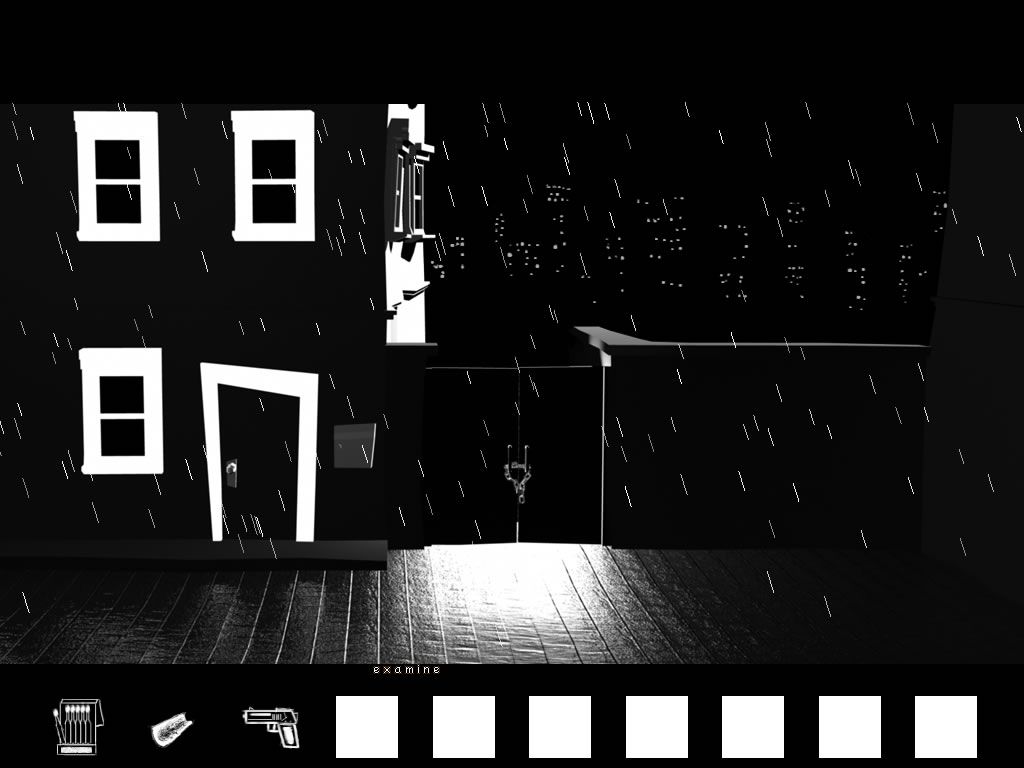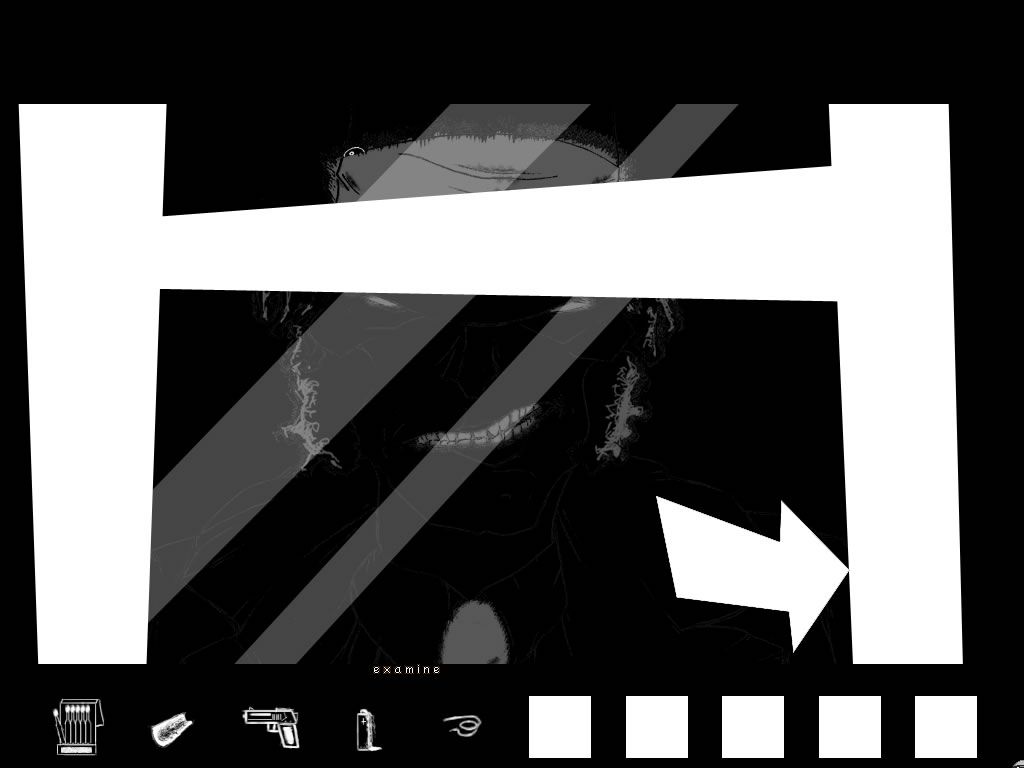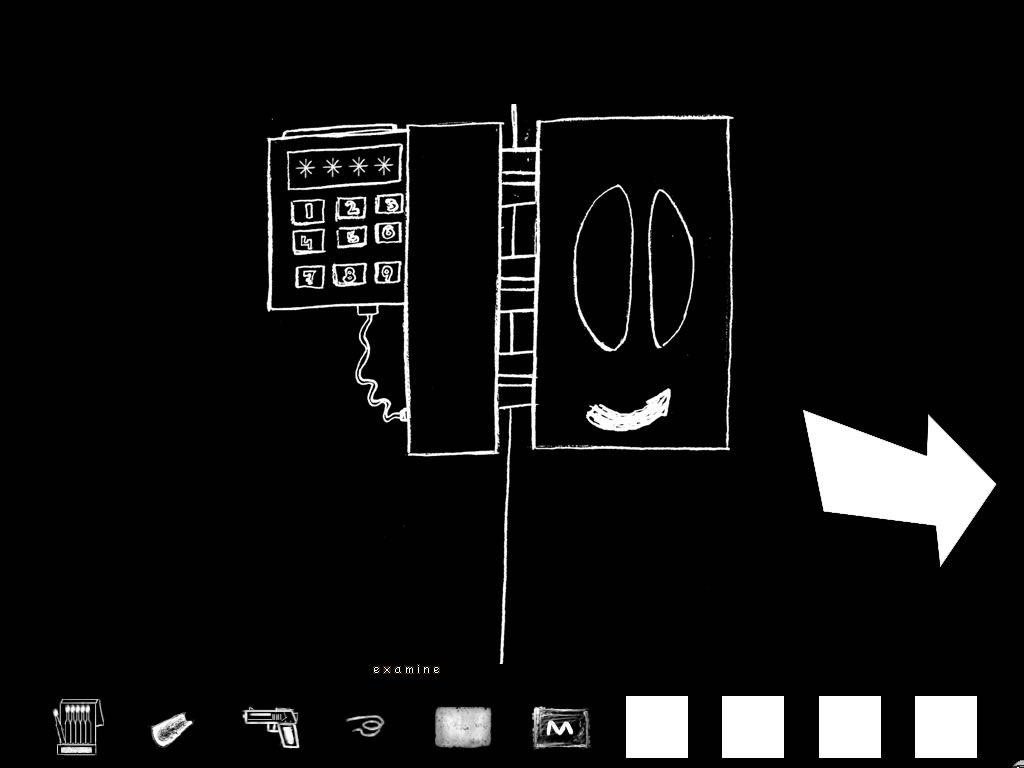Retro Replay Review
Gameplay
SchattenJagd unfolds as a tightly woven, first-person detective adventure that plunges players into a dark alley mystery. From the onset, the controls are intuitive: two mouse-based icons—“examine” and “interact”—allow you to scrutinize every clue in your environment or manipulate objects to progress. This simplicity belies the depth of engagement, as every item in your inventory may hold the key to uncovering the killer’s identity. The linear structure ensures that each discovery propels you forward, eliminating needless backtracking and keeping the tension high throughout the roughly one-hour runtime.
The game’s fixed, side-scrolling, and comic-panel sequences blend seamlessly, offering varied perspectives that enhance the sense of noir intrigue. At times, you’ll navigate narrow alleyways in classic side-scroller fashion, then suddenly find yourself immersed in a panel-based interrogation scene reminiscent of a graphic novel. This mixture of presentation styles not only honors Frank Miller’s iconic aesthetic but also breaks monotony, ensuring that each investigative beat feels fresh and memorable.
While the core puzzle mechanics remain straightforward—combine items, use them on hotspots, and select dialogue choices—the stakes are ever-present. A single misstep in a conversation can close off critical evidence, driving you toward one of the two possible endings. This binary outcome injects genuine suspense into every interaction, compelling you to replay and explore alternate dialogue paths to ensure you’re not wrongfully accused. Even in its brevity, SchattenJagd’s gameplay loop grips you with a sense of urgency that few freeware titles can match.
Graphics
Visually, SchattenJagd embraces a stark black-and-white palette that pays direct homage to classic noir cinema and Frank Miller’s graphic novel style. Shadows are not merely decorative—they’re functional, concealing clues in pitch-black corners and casting long, ominous silhouettes that heighten the game’s suspense. The contrast is crisp and evocative, making every scene feel like a page torn from a monochrome detective comic strip.
The choice to forgo color support amplifies the atmosphere, turning minimalist backgrounds into claustrophobic spaces where every alley brick and dripping pipe feels loaded with narrative potential. In side-scrolling segments, the parallax layering of foreground and background elements creates a surprisingly dynamic sense of depth despite the absence of color. Even static panels come alive as subtle animations—like rising steam or flickering neon—add texture to an otherwise spare backdrop.
Character models, while not hyper-detailed, are rendered with enough expressive flair that their silhouettes and gestures convey emotions and intentions clearly. The protagonist’s trench coat flaps in the wind, the killer’s profile emerges from the gloom, and ambient effects such as rain streaks or distant rain-slicked pavements serve to immerse you further. For a freeware project, these black-and-white visuals are remarkably polished and profoundly effective in setting the tone.
Story
The narrative hook of SchattenJagd is deceptively simple: two old friends meet in a dark alley, gunshots ring out, and one lies dead. Yet within this terse premise lies a web of secrets, betrayals, and hidden motives waiting to be unraveled. As the surviving friend, you race against time—not only to catch the killer, but to clear your own name before the police arrive. This fundamental premise ensures that every conversation and object you examine carries potential weight.
Dialogue scenes are presented in the upper-left corner of the screen, delivering exchanges in punchy, film-noir style prose. Your choices steer the investigation, but they also shape how other characters perceive you. A brusque insult, a probing question, or a tactful compliment can open doors to new clues—or slam them shut. This branching dialogue may lead to one of two distinct endings, encouraging multiple playthroughs to see how small changes can drastically alter the outcome.
Despite its short length, SchattenJagd’s script manages to hint at a broader criminal underworld beyond the alley’s confines. References to rival gangs, corrupt cops, and a looming conspiracy give the impression that this is merely the first act of a much larger saga. Even if the game ultimately resolves in under an hour, its ending feels earned and carries enough unresolved tension to fuel your imagination long after the credits roll.
Overall Experience
SchattenJagd stands out among freeware titles for its cohesive blend of tight gameplay design, evocative visuals, and a suspenseful story that respects the player’s intelligence. The absence of backtracking keeps the pace brisk, while the combination of fixed, side-scrolling, and comic-panel scenes prevents any single mode of play from growing stale. Each moment feels deliberately curated to maintain a sense of mystery and dread.
The game’s noir atmosphere, bolstered by its high-contrast black-and-white presentation and minimalist sound design, offers a remarkably immersive experience that belies its zero-dollar price tag. You’ll find yourself leaning into the screen as you pore over every clue, feeling the adrenaline of chasing a killer through rain-soaked alleyways. Even the simple act of clicking “examine” on a discarded match or a bloodstain can spark a thrill of discovery.
Ultimately, SchattenJagd is a masterclass in concise, impactful storytelling and design. It may be short and linear, but its narrative tension, polished presentation, and meaningful branching choices deliver a deeply satisfying detective adventure. For fans of classic noir and anyone seeking a tight, immersive mystery experience, SchattenJagd offers more than enough intrigue and style to justify a playthrough—if not two.
 Retro Replay Retro Replay gaming reviews, news, emulation, geek stuff and more!
Retro Replay Retro Replay gaming reviews, news, emulation, geek stuff and more!









Reviews
There are no reviews yet.